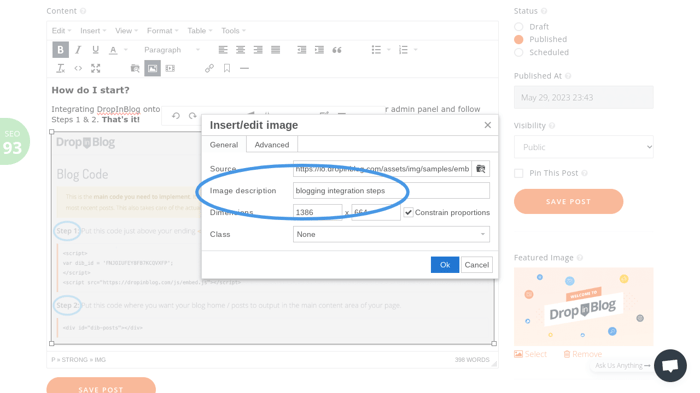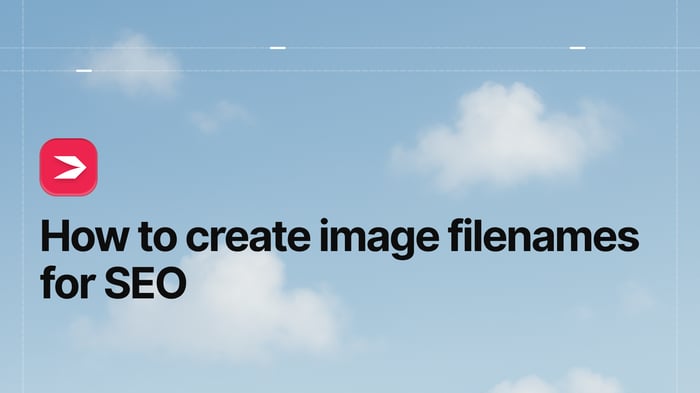Adding images to a blog post to break up the page keeps readers engaged, but many bloggers forget to name their image files or add image alt text – a big mistake. There are big benefits to be gained from image filenames for SEO, and you don’t want to miss any opportunities to rank higher in SERPs.
We’re going to go into detail about how image file names affect SEO and how you can name image files for the best results.
Table of Contents
Naming Image Files and Image Alt Text – What’s the Difference?
Both the file name and the image alt text are important for SEO. Search engines will take into account image file names when crawling a page to improve its understanding of the content on that page. It’s also pretty helpful to keep your images organized, so choose logical file names that explain what the image is about.
The image alt text is also used by search engines to help index a page but also so that it can be found in an image search. If an image is broken in some way then the image alt text will appear in its place. It’s a helpful SEO element for your content and should never be forgotten.
Why Is It Important to Name Image Files?
When search engines crawl your content, they’re reading everything to get an understanding of what the content is about and index it correctly. By naming your image files and adding image alt text, you help search engines gain context.
But there’s another benefit – you can also attract traffic from an image search – as opposed to a standard search query. This is an additional route for drawing traffic to your site.
How to Name Image Files
Depending on the blogging platform you use, the process for naming image files will differ a little. In fact, some blogging platforms may not even give you full SEO functionality or the ability to add image alt text.
DropInBlog gives you all the SEO functionality you need, including the SEO Analyzer tool. It's also easy to add image alt text, as shown below.

You can also manage all your images in an image library, where you can rename files.

DropInBlog also has a ton of other handy functionalities like the ability to manage multiple authors, pin a post, and add social sharing buttons or shoppable product links.
Ground Rules for Naming Image Files for SEO
When naming image files or writing alt text for an image, there are a few basic rules to follow.
1. Give a Descriptive but Concise Name
Make sure the file name accurately describes the image, but keep it brief. Overly long file names are prone to errors.
Typically, the automated file name of an image will be something like screenshot34.png, which doesn’t provide any detail as to the image’s content. If your image shows a girl picking flowers, you could name the file girl-picking-flowers.png.
2. Include Keywords and Hyphens
For the best SEO gains, include your target keyword, but keep it natural. When separating several words, it’s best to use hyphens because search engines understand these as word separators.
3. Lowercase Letters and No Special Characters
With the exception of hyphens, you don’t want to use any other special characters like %, $, £, ! or * in your image file name. These confuse search engines and may lead to bad indexing. The same goes for using uppercase letters. Web servers are case-sensitive, so consistently using lowercase letters reduces the risk of errors.
FAQs
Does an image file name impact SEO?
Both the image file name and the image alt text have an impact on SEO. The image file name is crawled by search engines, and the image alt text will help your page get found in an image search. So, it’s important to always write a logical file name and add the image alt text.
How long is too long for an image file name?
An image file name shouldn’t be longer than 70 characters, but the general rule of thumb is no more than five words.
Final Thoughts
When it comes to SEO, every little detail counts. Adding image alt text may seem like a minor issue, but it can have a big impact on SEO. While the image file name doesn’t directly affect SEO, it’s good practice to methodically and accurately name your images.
Make your file names brief, but ensure they accurately describe the content. Include your target keyword in at least one image, and always use lowercase letters. Use hyphens to separate words, and never use any other special characters. If you follow these ground rules for naming image files, you’re on the right track. Happy blogging!





